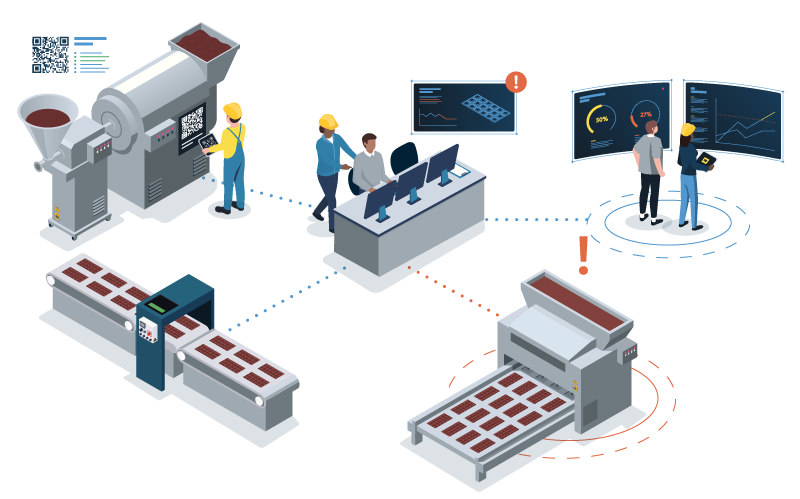Maximizing Efficiency: Harnessing Digital Twins in Business Operations


Maximizing Efficiency: Harnessing Digital Twins in Business Operations
In the ever-evolving landscape of business operations, leveraging innovative technologies is key to staying competitive. Digital twins have emerged as a transformative tool, offering businesses unprecedented insights and capabilities. Let’s explore the significance of digital twins in enhancing efficiency across various facets of business operations.
Understanding Digital Twins
Digital twins are virtual replicas of physical objects, processes, or systems. In the context of business operations, they mimic real-world elements like equipment, products, or entire workflows. This digital representation enables organizations to monitor, analyze, and optimize processes in real time, fostering a new era of data-driven decision-making.
Improving Operational Visibility
One of the primary advantages of digital twins is the enhanced visibility they provide into complex business operations. By creating a virtual model that mirrors the physical reality, organizations gain a comprehensive view of their processes. This visibility extends from individual components to entire supply chains, allowing for proactive identification of bottlenecks and areas for improvement.
Enhancing Predictive Analytics
Digital twins empower businesses with predictive analytics capabilities. By simulating various scenarios, organizations can anticipate potential issues and trends, enabling proactive decision-making. This foresight is invaluable in preventing disruptions, optimizing resource allocation, and ultimately improving the overall efficiency of business operations.
Streamlining Maintenance and Repairs
In sectors involving machinery or equipment, digital twins play a crucial role in maintenance and repairs. By continuously monitoring the performance of physical assets through their digital counterparts, organizations can predict when maintenance is required, reducing downtime and extending the lifespan of equipment. This proactive approach enhances operational efficiency and reduces unforeseen disruptions.
Optimizing Supply Chain Management
The complexity of modern supply chains can present significant challenges. Digital twins offer a solution by providing a dynamic representation of the entire supply chain. This includes inventory levels, production processes, and logistics. Optimizing these elements in a virtual environment translates to improved real-world supply chain efficiency.
Facilitating Product Development
Digital twins are instrumental in product development, allowing organizations to simulate and refine prototypes in a virtual space. This accelerates the design and testing phases, reducing time-to-market for new products. The ability to iterate and refine in a digital environment enhances innovation while minimizing the risks associated with physical prototyping.
Realizing Energy Efficiency
In industries where energy consumption is a critical factor, digital twins contribute to energy efficiency. By modeling and analyzing energy usage in real-time, organizations can identify opportunities for optimization. This not only reduces operational costs but also aligns with sustainability goals, a growing concern for businesses worldwide.
Digital twins in business operations are a transformative technology that empowers organizations to adapt to the complexities of the modern business landscape. To delve deeper into how digital twins can revolutionize your operations, visit Digital Twins in Business Operations.
Overcoming Implementation Challenges
While the benefits of digital twins are substantial, implementing this technology comes with challenges. Integration with existing systems, data security, and the need for skilled personnel are among the hurdles organizations may face. Overcoming these challenges requires a strategic approach, emphasizing collaboration between IT and operational teams.
The Future of Business Operations
As technology continues to advance, the role of digital twins in business operations is likely to expand. From enhanced artificial intelligence integration to more sophisticated simulations, the future holds exciting possibilities. Organizations that embrace and adapt to these innovations will position themselves as industry leaders, driving efficiency and competitiveness in the digital era.
In conclusion, digital twins represent a paradigm shift in how businesses approach operations. By providing a holistic and dynamic view of processes, assets, and systems, they offer a powerful tool for organizations striving to maximize efficiency and stay ahead in today’s dynamic business environment.







